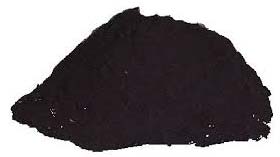Gidc Industrial Estate, Ankleshwar, Gujarat
- GST NO. : 24AABCA6649R1Z5
How Should You Select Solvent Dyeing Manufacturers?
Posted by Admin on October, 13, 2021

A solvent dye is a soluble organic solvent. Solvent dye is helpful for organic colour solvents, waxes, plastics, lubricants, and hydrocarbon fuels. The molecules of the solvent dye are non-polar that don't undergo ionisation.
Solvent dye is insoluble in water. Solvent dye is helpful for gold imitation and other transparent metals. Manufacturers also use solvent dye for inks, glass colouration, and inkjet inks preparation.
What is Solvent Dyeing?
Solvent dyeing is a dyeing process that passes through continuous non-aqueous phases. In this process, manufacturers use solvent as dyeing media, but sometimes they add water to support the dyeing method. They use a particular proportion of dyeing solvent.
The dyes are soluble in the solvents, and the solvent carries the molecules to the inner part of the fibre. Solvent dyeing is not beneficial for the natural fibre dyeing process. It is helpful for artificial fibres such as nylon, polyester, and acetate. Trichloroethylene, trichloroethylene, and perchloroethylene are types of solvent dyeing.
In India, manufacturers mainly use alcohol and water mixture to dye the synthetic polyester fibres. Chlorine solvent is different from water-based solvent dyeing. However, chlorine solvents are able to wet the fibres rapidly.
Features of Solvent Dyeing
• The essential features of solvent dyeing are as follows-
• Solvent dye is insoluble in water.
• Molecules of the solvent dye are non-polar.
• It forms several colloidal solutions
• Solvent dye has poor to suitable light fastness components.
• Green and blue solvent dyes tend to be anthraquinone dyes, but red and yellow solvent dyesareazo dyes.
• Solvent dye doesn't produce discrete films during the manufacturing process.
• The solvent dyeing method ensures the consistency and quality of the colour that dissolves easily in the organic solvent.
• Alcohol, waxes, oils, and fats are part of synthetic dye.
Necessary of Solvent Dyeing
The necessity of the solvent dyeing is as follows-
In the textile industry, manufacturers use the solvent dyeing method due to the unavailability of freshwater. Sometimes, manufacturers face huge problemsregarding the disposal of waste water. In such a case, they use the solvent dyeing method.
The solvent dyeing method consumes less energy; thus, it is essential to use the solvent dyeing method to save electricity. If manufacturers want to eliminate the costly dyeing method and water pollution problem, they can use the solvent dyeing method.Solvent dye is consistent with shades and quality, and it has good thermal stability.
Application of Solvent Dyeing Method
• One can use the synthetic dyeing process in the following segments-
• Solvent dyeing is applicable for gold imitation and polyester films production.
• It is helpful in the media industry for newspaper and magazine printing
• It is helpful in the pyrotechnics industry.
• The synthetic dyeing method is helpful in signaling smoke in the pyrotechnics industry.
• Synthetic dyeing is helpful in the plastic, nylon, polyester, and PVC industry.
Solvent dyes manufacturers in India also use synthetic dyeing methods in the wood stains, food industry, and hydrocarbon fuels.In the future artificial dyeing process will also increase drastically with technological development.
This entry was posted on October, 13, 2021 at 15 : 27 pm and is filed under Solvent Dyes. You can follow any responses to this entry through the RSS 2.0 feed. You can leave a response from your own site.
Search
Category
Recent Posts
- Applications & Widely Applicable Features Of Proprietary Mixed Solvent Dyes
- What Is The Use Of Methylene Blue Zinc Free Solvent Dyes?
- Everything You Need To Know About Scarlet Solvent Dyes
- Applications & Widely Applicable Features of Proprietary Mixed Solvent Dyes
- How Should You Select Solvent Dyeing Manufacturers?


